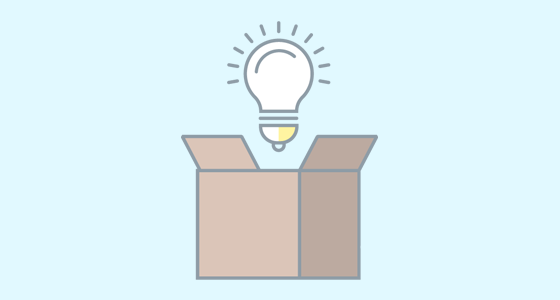
Before your B2B Ecommerce business takes on the challenges of catalog management and product updates, there’s the small matter of product sourcing to address. Although your product sourcing alone doesn’t define business success, it’s critical to the speed and scale of your growth. With global Ecommerce sales now nudging $6.5 trillion, of which some $870 billion is in the U.S. market, there’s certainly a lot of growth to be seized. Here’s how to source products successfully and apply a winning strategy for your B2B business.
What’s the Overall Goal with Product Sourcing?
You’ll find hundreds of YouTube tutorials showing you how to find the cheapest products online to sell at the biggest markup, but that’s not the foundation for a successful long-term Ecommerce B2B business. If your only goal is margins, you’ll remain stuck in a relentless cycle of new customer acquisition, when what you really want is to build a brand. The focus has to be on customer experience and retention. After all, you’re not just selling a product, you’re potentially packaging, storing and shipping it. That means the products you source have to meet the competitive threshold for most of the following:
- Quality: B2B customers need to experience the “wow factor” as much as B2C consumers.
- Consistency and reliability: your customer could be relying on your product for their business too.
- Fast shipping: ideally within 7 days, and certainly no more than 30 unless you’re set up to absorb the cost of chargebacks and returns.
- Education: your marketing team may have to show customers how to use your product.
- After-sales support (including returns): the goal has to be customer retention.
How Product Sourcing Works
The Ecommerce strategy for product sourcing is faithful to the brick and mortar model in one key aspect — your product must solve an existing customer problem. If you’re looking for a product that will create a market, your search could be long and costly. Once you’ve established the rational and emotional need for your product, the hard work begins:
- Research relentlessly: Search for suppliers, analyze your competitors (what have they missed?), and read every comment or question you can find online from your potential customers.
- Product evaluation: What is the potential market size? Who is your target customer? What are the barriers stopping the latter from scaling the former?
- Establish margins: Once you have several proposals on the table, compare the cost of goods, plus the cost of shipping, import taxes, sales and marketing. Reference your ideal price point against your competitors.
- Negotiate: You might be able to secure a better deal by buying in larger volume or offering faster payment terms. Whatever the discussion, focus on building long-term supplier relationships.
4 Key Challenges and Considerations
Of the 30,000 or so consumer products launched in the US each year, 80% fail. You can increase your chances of joining the successful 20% by planning ahead for these challenges.
1. Establishing Trust
in today’s cross-border, globalized world, you’re probably not going to be meeting your supplier, but you’ve still got to build the relationship. Look for suppliers with several years of business activity, good testimonials and a willingness to be flexible, proactive and accessible. That also applies to any agents you use for shipping, product sourcing or fulfillment.
2. Seasonality
Your order volume and inventory levels may well fluctuate over the year. The majority of your sales could be over a single holiday period in some sectors. Ensure that your supplier can adapt to your schedule and that your warehousing is set up to respond to seasonal demand.
3. Restrictions and Regulations
Before importing any product from overseas, you’ll need to make sure that it meets the safety standards or industry specifications for your market. Many food and beverage items, for example, are banned or restricted in the U.S.
4. Supply Chain Disruption
Recent years have exposed the fragility of supply chains, whether the reason is lockdown, congested ports or civil unrest. Even currency fluctuations or trade embargoes can torpedo your supply. Always have a backup supplier on standby.
How To Source Products Your Customers Can Trust
There’s an easy way and a smart way to source products. The most frictionless route is to search on the same platforms and portals that all your competitors (and some of your customers) are already using, such as Aliexpress, Alibaba and Global Sources in China, or ThomasNet and Maker’s Row in the US. While these are all proven, successful sites for product sourcing, you’ll struggle to unearth any item that can differentiate your business.
That’s why it’s better in the long term to take the harder, smarter route. In this case, you’re reverse engineering the problem, starting from a customer perspective. Instead of starting with a product search, begin with the search a customer would make, defined by their pain points. That will take you to a shortlist of target solutions already on the market. Now all you have to do is follow the digital trail:
- Search for the products on Amazon or eBay to find suppliers, read customer reviews and identify the top-rated manufacturers.
- Use a tool such as ImportGenius to see where your competitors are sourcing their products.
- Don’t ignore the brick and mortar stores. Those that have yet to establish an Ecommerce presence should be ready to embrace the opportunity to sell online.
Trade Shows
You’re going to discover next season’s trending products at this year’s trade shows. Showing your support early and attending manufacturers’ presentations might even sweeten their initial deal. You’ll still have to establish a sourcing model (eg. direct to manufacturer) but the more active you are on the trade show scene, the more likely you are to source products that disrupt the market.
Who To Work With
B2B Ecommerce store owners have a wide range of options to choose from when it comes to product sourcing. The one you choose will typically depend on the order volumes you have in mind, how much safety stock you want to hold, and the target margin you’re aiming for.
Direct from Manufacturers
There may be local agents involved to help you navigate language barriers or red tape, but if you’re prepared to buy in enough volume to meet the minimum order quantity (MOQ), buying direct from the manufacturer offers a lean, cost-effective solution. It’s great if you want to apply your own branding to white label goods, but you will have to factor in the cost of warehousing and inventory management at home.
Wholesalers
Because wholesalers typically sell products that are already established in the market, you can be confident that customer demand is consistent. Their market expertise is also valuable. On the flip side, wholesalers trade with your competitors too, so you have to work harder to differentiate your product in the market.
Dropshippers
With this popular product sourcing model, you partner with a dropshipper to order directly from manufacturers without having to hold inventory or manage fulfillment. It’s the leanest form of product sourcing in the sense that you never have to carry excess stock or calculate demand. On the downside, shipping times can be slower, but because of the low cost and minimal fuss, it’s a good model for testing a new product with your market.
Sourced Your Products? Zoey Will Help You Sell Them
Once you’ve found a supplier that fits your needs, you can seamlessly integrate their data into your Zoey Ecommerce store. Plus, Zoey helps you quickly surface real-time data to improve product sourcing moving forward. Want to try it for yourself? Request a free demo today!
For more B2B Ecommerce product sourcing, warehousing and logistics tips, check out our Shipping and Logistics blog posts.
Nick Marshall is a freelance writer from the UK covering B2B marketing, emerging tech, payments and Ecommerce. He lives on a tiny island with slow internet in the French Caribbean, but was formerly an agency copywriter in the UK.





